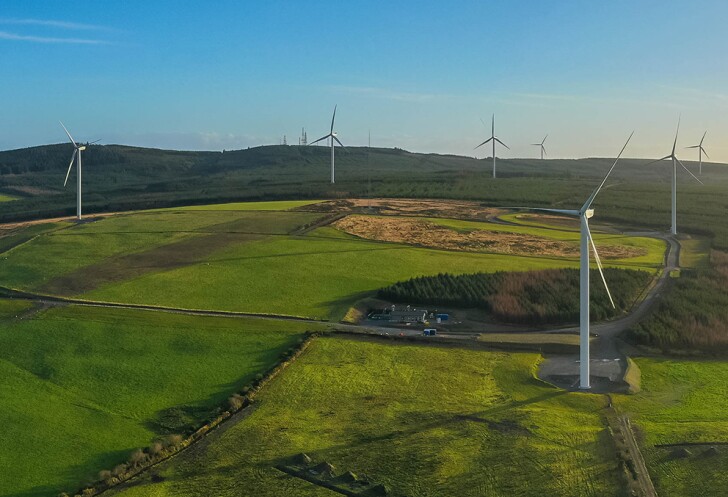Driving Climate Solutions
Climate scientists agree that the world needs to reduce its carbon emissions, and we at Amazon are working to do our part. We aim to reach net-zero carbon emissions across our operations by 2040 by investing in carbon-free energy, scaling solutions, and collaborating with partners to broaden our impact.



Driven by the urgency of climate change, we co-founded The Climate Pledge in 2019 and committed to achieve net-zero carbon emissions by 2040. Since then, we’ve made strides to match all of the electricity used to power our operations with 100% renewable energy, and we’re on track to meet our goal by 2025—five years sooner than planned.
To reach this target, we’re also expanding the use of zero-emission transportation such as electric delivery vans, cargo e-bikes, and on-foot deliveries, and we engage in industry initiatives to remove carbon emissions from transportation systems like ocean shipping, aviation, and trucking. We’re also using innovative construction techniques and building materials to make our fulfillment centers, data centers, offices, and physical retail locations more sustainable.
We are committed to reaching net-zero carbon emissions in the next 17 years. To get there, we have set interim goals, identified key areas of our business for decarbonization, and identified levers and accelerators to help us get there.
- Our Focus Areas: Delivery and logistics, building construction and operations, servers and hardware, packaging, and products and services
- How We Will Get There: Choosing lower-carbon alternatives, transitioning to renewable energy, engaging suppliers, driving efficiency, and neutralizing carbon
- Accelerating Our Efforts: Investing in breakthrough technology, decarbonizing through policy change, accelerating cross-sector collaboration through The Climate Pledge, and engaging in key partnerships
The Climate Pledge is a commitment to reach net-zero carbon by 2040. Amazon co-founded The Climate Pledge with Global Optimism in 2019 and became the first company to sign the Pledge.
The Climate Pledge brings together the world’s top companies to accelerate joint action, cross-sector collaboration, and responsible change. Signatories agree to three areas of action:
- Regular Reporting
Measure and report on greenhouse gas (GHG) emissions on a regular basis. - Carbon Elimination
Implement decarbonization strategies in line with the Paris Agreement through business change and innovations, including efficiency improvements, renewable energy, materials reductions, and other carbon emission elimination strategies. - Credible Offsets
Neutralize any remaining emissions with additional, quantifiable, real, permanent, and socially beneficial offsets to achieve net-zero annual carbon emissions by 2040.
Future Forward is a documentary series featuring businesses that are pioneering industry-shifting innovations on the front lines of climate change. These six short films highlight how signatories of The Climate Pledge are trailblazing paths to a cleaner future through decarbonization, demonstrating that a net-zero carbon journey is both possible and crucial.
Our investment in Hippo Harvest in 2021 helped the company scale from a small startup to a commercial-sized operation. Today, Amazon is selling Hippo Harvest’s first line of leafy green lettuces, which are grown using 92% less water and 55% less fertilizer than conventional produce. The greens are also grown with no pesticides and packaged in 100% post-consumer recycled plastic.
We rely on a complex transportation network to get products from manufacturers and sellers to customers around the globe. Our logistics network spans every step of the journey—from global transportation between factories and ports, to last-mile delivery between delivery stations and customers.
We’re decarbonizing transportation across our business by increasing fleet efficiency, expanding the use of low-carbon fuels, and scaling electric and alternative-fuel vehicles. We also partner on initiatives to reduce carbon emissions in the wider transportation industry, and engage with policymakers and other decision-makers to advance policies in support of transportation decarbonization.
Read our update regarding Shipment Zero.
We operate thousands of world-class facilities that serve our employees, customers, and communities across the globe. This includes operations buildings, such as fulfillment centers, delivery stations, warehouses, and sort centers, along with corporate offices, data centers, and physical retail stores. We’re reducing emissions across our portfolio by increasing the energy efficiency of our buildings, expanding our use of renewable energy, and using more-sustainable building materials.











